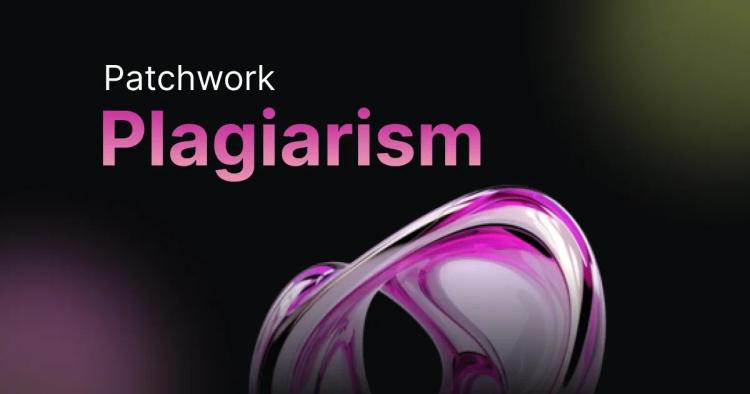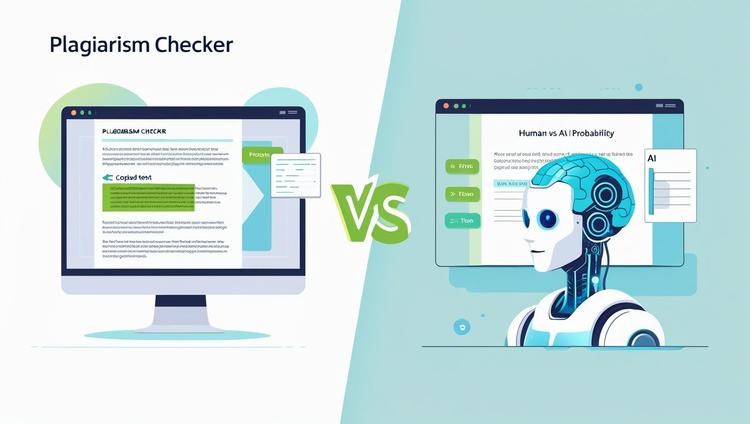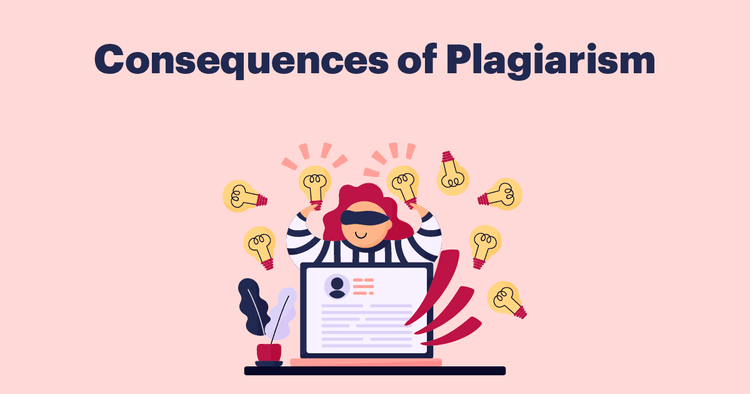Welcome to a journey through the corridors of literature and academia, where the echoes of plagiarism resonate through time. It's a topic that goes beyond rules and regulations; it strikes at the heart of creativity and honesty in writing.
Imagine a world where every word is a unique melody, and every idea is a brushstroke on the canvas of human knowledge. Now, let's explore why this vision often collides with the harsh reality of plagiarism.
In the vast landscape of writing, plagiarism is like a lurking shadow waiting to pounce on the unsuspecting. It’s not just about copying and pasting; it’s about the very essence of original thought. It's a betrayal of trust, a breach of the unwritten contract that writers share – the pact of authenticity.
Today, we embark on a journey to uncover the stories behind some infamous cases of plagiarism and ponder over how these literary missteps might have been avoided.
ᴀᴅᴠᴇʀᴛɪsᴇᴍᴇɴᴛ
What is Plagiarism?
Plagiarism, in its simplest form, is like taking someone else’s cake and putting your name on it at the school bake sale. In the world of words, it's when you borrow someone else's ideas, words, or work and present them as your own masterpiece. It’s not just a no-no; it's a breach of the unwritten code of trust among writers.
Picture this: you spend hours crafting a beautiful sandcastle on the beach, and someone comes along, claims it as their own, and enters it into a sandcastle competition.
Plagiarism is a bit like that – it's claiming someone else's creation as yours. It’s not just a wrongdoing; it's a ripple that disturbs the calm waters of creativity.
Why Should You Avoid Plagiarism
Avoiding plagiarism isn't just about following rules; it's about preserving the integrity of ideas. When you engage in plagiarism, it's like taking credit for someone else's hard work and stealing the chance for that person to be recognized for their effort. It's about fairness and honesty in the world of words.
Think of it this way: if you spent hours crafting a beautiful piece, wouldn't you want credit for it? Plagiarism takes away that credit and replaces it with a cloud of doubt. It's not just about getting caught; it's about being true to yourself and your readers.
A Brief History of Plagiarism
Early Instances of Plagiarism
Plagiarism isn’t a new problem. Picture this: back in ancient Greece, a student might have copied another philosopher's work and claimed it as their own. It happened then, just like it happens now.
These stories from the past remind us that the struggle against plagiarism has been going on for a very long time.
How Awareness of Plagiarism Evolved
As time moved on, so did our understanding of plagiarism. Back in the day, it was more about copying scrolls. Now, it's about copying and pasting from the vast library that is the internet. The more we know about plagiarism, the better we can protect ourselves and our work.
It's like learning from the mistakes of our literary ancestors to build a more honest writing future.
Famous Plagiarism Cases
Plagiarism isn’t just a word; it's a reality that has shaken the worlds of academia, literature, and public figures. Let’s unravel some eye-opening stories that sent shockwaves through the writing landscape.
Interested in how this plays out in music? See The 10 Most Famous Plagiarized Songs in Music History for landmark cases, rulings, and what creators can learn.
ᴀᴅᴠᴇʀᴛɪsᴇᴍᴇɴᴛ
Case Study 1: Martin Luther King Jr. and Boston University (1989)
Overview of the Case
Martin Luther King Jr., a towering figure in civil rights, faced allegations of plagiarism in his doctoral dissertation. The scrutiny wasn't just about academic misconduct; it cast shadows on a man celebrated for his monumental impact on equality.
Consequences for the Perpetrator
The consequences weren’t confined to academic repercussions. King's reputation, built on inspiring speeches and a relentless fight for justice, faced a severe blow. It was a moment when the hero stumbled. Impact on the Original Author Imagine pouring your heart into a piece of work, only to find it echoed in another’s dissertation without credit. For the original author, it’s a betrayal, a realization that even the most revered figures might stand on borrowed words.
Case Study 2: Doris Kearns Goodwin and "The Fitzgeralds and the Kennedys" (2002)
Brief Overview
Doris Kearns Goodwin, a Pulitzer Prize-winning historian, found herself in the storm of plagiarism allegations concerning her book. The incident wasn't just about a single work; it exposed the fragility of authorship in the age of information overload.
Notable Details
Goodwin's case showcased the slippery slope of research, where the line between referencing and copying blurs. In a sea of information, even meticulous researchers can find themselves inadvertently sailing into plagiarism territory.
Legal Ramifications
The story of Goodwin underscored that plagiarism isn’t just an ethical concern; it can have legal consequences. The legal system became a battlefield where the boundaries of intellectual property were fiercely contested.
Case Study 3: Jane Goodall and "Seeds of Hope" (2013)
Summary of the Incident
Even the esteemed primatologist Jane Goodall faced accusations of plagiarism in her book "Seeds of Hope." The incident shook the foundations of trust in the authenticity of her work and demonstrated that plagiarism knows no bounds.
Lessons Learned
Goodall’s case serves as a lesson that even the most respected individuals can slip. It emphasizes the need for perpetual vigilance and humility, acknowledging that everyone is susceptible to unintentional oversights.
In the realm of famous plagiarism cases, these stories are not just cautionary tales but windows into the complexities and challenges of maintaining originality in a world inundated with information.
ᴀᴅᴠᴇʀᴛɪsᴇᴍᴇɴᴛ
Factors Contributing to Plagiarism
Lack of Understanding
Plagiarism often starts with not really getting what it is. It's like a confusing maze where writers might unintentionally take a wrong turn. Schools and colleges need to be like guides, explaining the rules of the maze - what's okay and what's not.
Clear lessons on how to give credit for someone else's words can be like a map, helping writers find their way.
Pressure and Deadlines
Imagine being in a race against time. Sometimes, when people are rushing to finish a paper or meet a deadline, they might cut corners without even realizing it. It's like trying to build a sturdy house in a hurry – you might forget a few bricks.
Schools and workplaces need to understand that good work takes time. By giving more realistic deadlines, they can help writers avoid the pressure that often leads to plagiarism.
Laziness or Unethical Behavior
Imagine you have a big puzzle to solve, but instead of figuring it out, you decide to copy someone else's solution. That's a bit like laziness leading to plagiarism. Some people might take the easy way out because it seems quicker, but it's not fair or honest.
Schools and workplaces need to instill a sense of pride in one's work. By encouraging a strong work ethic, they can help writers resist the temptation to take shortcuts.
How Plagiarism Could’ve Been Avoided
Proper Citation Practices
Think of writing as a conversation where everyone gets credit for their ideas. When you use someone else's words or thoughts, it's like borrowing a cup of sugar from a neighbor. You need to say where you got it.
Schools can teach this from the start, showing students how to give a shout-out to the people whose ideas they use. It's not just a rule; it's a way of saying, "Hey, I got this idea from here, and I want you to know."
Educational Programs on Academic Integrity
Imagine a school or college as a garden where new ideas bloom. But for those ideas to grow, everyone needs to follow some rules, like not stepping on the flowers.
Schools can have programs that explain these rules, helping students understand why it's important to let everyone's ideas flourish. These programs can be like watering the garden of knowledge, making sure it stays vibrant and diverse.
Developing Original Work Ethic
Picture writing as creating a unique piece of art. Just like an artist takes pride in every brushstroke, a writer should take pride in every word they put down. Schools can encourage this pride by celebrating original work.
When students feel like their ideas are important, they're less likely to copy someone else's. It's about showing writers that their words have value, and that value comes from being uniquely theirs.
ᴀᴅᴠᴇʀᴛɪsᴇᴍᴇɴᴛ
Technology and CopyChecker’s Plagiarism Detection
Imagine CopyChecker as your vigilant guardian against unintentional plagiarism. It's not just a tool; it's your ally in the pursuit of originality. As you write, CopyChecker silently scans the vast realm of knowledge, ensuring your work stands as a testament to your creativity.
Features and Functionality
Real-time Analysis
In the dynamic world of writing, time is of the essence. CopyChecker's real-time analysis ensures that as your ideas flow, it simultaneously checks for any unintentional echoes of existing content. It's like having a second set of eyes, always watching your back.
Extensive Database
CopyChecker goes beyond the surface, diving deep into an extensive database. It doesn't just identify the obvious matches; it recognizes even the subtlest similarities, ensuring that your work is not just original but a unique contribution to the conversation.
User-Friendly Interface
You don’t need to be a tech guru to navigate CopyChecker. Its user-friendly interface makes it accessible to all writers, from seasoned professionals to budding wordsmiths. With just a few clicks, you can ensure that your work is free from unintentional borrowings.
Benefits of Using Plagiarism Checker Tools
Prevention of Unintentional Plagiarism
Picture this: you've poured your heart into your work, and CopyChecker acts as a safety net, catching any unintentional slips that could mar the brilliance of your creation. It's like having a trustworthy friend, ensuring your ideas remain authentically yours.
Academic and Professional Integrity
Upholding integrity isn’t just about following rules; it's about establishing trust. CopyChecker reinforces the importance of originality, safeguarding not just your reputation but the credibility of the entire academic and professional community.
Time Efficiency
In a world where time is scarce, CopyChecker becomes your time-saving companion. Spend more time creating and less time worrying about unintentional shadows of plagiarism. It's efficiency wrapped in the simplicity of a powerful tool.
Instances Where Plagiarism Checker Tools Could Have Prevented Cases
In the intricate tapestry of famous plagiarism cases, there were moments when a reliable plagiarism checker tool could have been the guardian angel of originality. Let’s rewind and explore these instances where technology could have been the safeguard against unintentional missteps.
Martin Luther King Jr. and Boston University (1989)
In the case of Martin Luther King Jr., a plagiarism checker tool might have flagged similarities in his doctoral dissertation before it became a contentious issue. This early detection could have prompted King to revisit and properly attribute sources, averting the subsequent controversy.
Doris Kearns Goodwin and "The Fitzgeralds and the Kennedys" (2002)
For Doris Kearns Goodwin, a plagiarism checker tool could have served as a meticulous companion during the research phase. By scanning her manuscript, it might have identified potential overlaps with existing works, prompting Goodwin to refine her citations and avoid accusations of plagiarism.
Jane Goodall and "Seeds of Hope" (2013)
In Jane Goodall’s case, a plagiarism checker tool could have acted as a vigilant assistant, highlighting any passages resembling existing content. This early warning might have prompted Goodall to revisit her writing, ensuring proper attribution and steering clear of plagiarism allegations.
FAQs
Who is most famous for plagiarism?
The most famous figure associated with plagiarism is perhaps Jayson Blair, a former journalist for The New York Times. His extensive plagiarism scandal in the early 2000s shook the journalistic community and raised questions about editorial oversight.
What famous person was accused of plagiarism?
Historically, the renowned historian Doris Kearns Goodwin faced accusations of plagiarism concerning her book "The Fitzgeralds and the Kennedys" in 2002. This case brought attention to the challenges of maintaining originality in historical research.
What is a famous plagiarism case for students?
A notable case for students is that of Martin Luther King Jr., who faced allegations of plagiarism in his doctoral dissertation at Boston University in 1989. This case serves as a reminder to students about the importance of proper citation practices and academic integrity.
ᴀᴅᴠᴇʀᴛɪsᴇᴍᴇɴᴛ
Conclusion
Plagiarism isn't a puzzle without a solution. It's a challenge that we can overcome with awareness, education, and the right tools. As we reflect on the tales of plagiarism, let’s embrace a future where plagiarism checker tools like CopyChecker become our trusted allies.
In this future, originality thrives, and every writer, from novice to seasoned, can contribute to the world of ideas with confidence and integrity. So, let’s write, create, and innovate, armed with the knowledge that our words are not just our own but a unique contribution to the tapestry of human thought.







